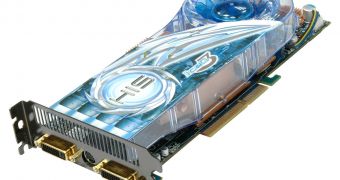Having a GPU out for three years and still not delivering on the features you've promised for that product is not something a GPU company should desire. And then there is AMD.
They’ve made some great CPUs over the years and ATI, later AMD, has built great GPUs also. The thing is that even AMD’s Bulldozer is a very good concept, what AMD managed to get out of it is again amazing.
Practically, going from one generation to the next, AMD is able to get considerable more integer performance from Bulldozer when compared to previous generation Thuban, by having just 25% more integer units.
We don’t know if it’s more surprising, or just the same as with the integer units, but AMD’s Bulldozer’s 4 floating point units are able to achieve the same, or even better results than Thuban’s 6 FPUs.
All in all, if we compare AMD with themselves, Bulldozer is a great step forward. They got more performance by using just 32 more transistors, while the die size was actually smaller.
It’s execution where AMD failed with Bulldozer.
All around latencies creeping out from every unit, and the inability to get some optimized software for the new architecture practically doomed the new FX line, leaving it with absolutely no winning scenario.
Therefore, we can easily see that AMD’s Bulldozer was not supposed to be faster or as fast as Thuban, but faster than competition.
It wasn’t. And if you have such a novel and different architecture that needs software to be optimized for it, why don’t you build some specially optimized software yourself so that you convince other developers that your architecture is worth working for.
AMD was never good with software. There are missing features in their drivers when it comes to the HD2000, HD3000 and HD4000 series, years after the release of the card.
They actually have a tessellation unit that has never been activated.
The company promised there would be software able to make use of the Stream Processing Units in the card’s GPUs, but this never happened.
Would it have been so hard to tackle on these issues? Could it have been so costly to have a team working on building one or two applications that make use of the compute power of the Stream Processing Units and one or two applications that use Bulldozer’s special design?
If you think about it, Intel has 95% of the developers in the entire world optimizing their applications for its processors. Even if they don’t bother optimizing themselves, by using Intel’s compiler, the optimization will be done for them.
Even so, Intel deemed it necessary to show that its iGPU in the company’s new processors is capable of great things, if there’s some effort put into developing the necessary software.
Therefore, Intel released QuickSync. This is an application that puts the compute power of the iGPU to good use and gets results that are 10 times faster than what the CPU alone might be able to do, and even 3 to 4 times faster than what Nvidia’s encoding efforts were able to output.
What if AMD had something similar? A simple application that showed that optimizing for Bulldozer could lead to huge performance benefits or an application that will be able to use the SPUs in AMD’s GPUs.
Such a piece of software could have proven very useful when the APUs launched and would prove useful even when trinity launches, as they use the same type of VLIW architecture when it comes to the SPUs.
But AMD is not really leaning into software development either way.
They’re not in the software optimizing business, not in the compiler business (but that’s really expensive), not even in compiler modding business (a simple mod in Intel’s compiler will make any x86 CPU work up to 30% faster than it normally does, because Intel’s compiler sabotages any CPU that doesn’t return the “Intel Genuine” string) and not in the driver business either.
AMD states that most of the bugs in the HD 2xxx, HD 3xxx and HD 4xxx series have been ironed out, and only stringent updates and application-specific issues will now be considered for a driver update. However, the drivers for these pre-HD5000 series will only come on a quarterly basis.
The first driver that supports all these pre-HD5xxx cards will come in May this year and, at first, Windows 8 support will be only offered by Microsoft’s own WHQL standard built-in driver.
So, while not completely halted, support for the HD 2xxx, HD 3xxx and HD 4xxx series will be scarcer than it used to be, even on the Windows side.

 14 DAY TRIAL //
14 DAY TRIAL //